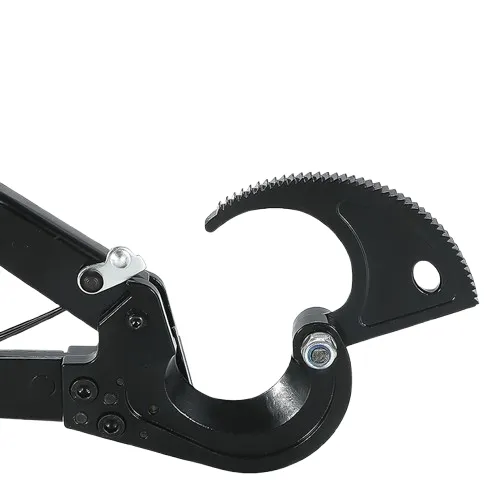
-
 Afrikaans
Afrikaans -
 Albanian
Albanian -
 Amharic
Amharic -
 Arabic
Arabic -
 Armenian
Armenian -
 Azerbaijani
Azerbaijani -
 Basque
Basque -
 Belarusian
Belarusian -
 Bengali
Bengali -
 Bosnian
Bosnian -
 Bulgarian
Bulgarian -
 Catalan
Catalan -
 Cebuano
Cebuano -
 Corsican
Corsican -
 Croatian
Croatian -
 Czech
Czech -
 Danish
Danish -
 Dutch
Dutch -
 English
English -
 Esperanto
Esperanto -
 Estonian
Estonian -
 Finnish
Finnish -
 French
French -
 Frisian
Frisian -
 Galician
Galician -
 Georgian
Georgian -
 German
German -
 Greek
Greek -
 Gujarati
Gujarati -
 Haitian Creole
Haitian Creole -
 hausa
hausa -
 hawaiian
hawaiian -
 Hebrew
Hebrew -
 Hindi
Hindi -
 Miao
Miao -
 Hungarian
Hungarian -
 Icelandic
Icelandic -
 igbo
igbo -
 Indonesian
Indonesian -
 irish
irish -
 Italian
Italian -
 Japanese
Japanese -
 Javanese
Javanese -
 Kannada
Kannada -
 kazakh
kazakh -
 Khmer
Khmer -
 Rwandese
Rwandese -
 Korean
Korean -
 Kurdish
Kurdish -
 Kyrgyz
Kyrgyz -
 Lao
Lao -
 Latin
Latin -
 Latvian
Latvian -
 Lithuanian
Lithuanian -
 Luxembourgish
Luxembourgish -
 Macedonian
Macedonian -
 Malgashi
Malgashi -
 Malay
Malay -
 Malayalam
Malayalam -
 Maltese
Maltese -
 Maori
Maori -
 Marathi
Marathi -
 Mongolian
Mongolian -
 Myanmar
Myanmar -
 Nepali
Nepali -
 Norwegian
Norwegian -
 Norwegian
Norwegian -
 Occitan
Occitan -
 Pashto
Pashto -
 Persian
Persian -
 Polish
Polish -
 Portuguese
Portuguese -
 Punjabi
Punjabi -
 Romanian
Romanian -
 Russian
Russian -
 Samoan
Samoan -
 Scottish Gaelic
Scottish Gaelic -
 Serbian
Serbian -
 Sesotho
Sesotho -
 Shona
Shona -
 Sindhi
Sindhi -
 Sinhala
Sinhala -
 Slovak
Slovak -
 Slovenian
Slovenian -
 Somali
Somali -
 Spanish
Spanish -
 Sundanese
Sundanese -
 Swahili
Swahili -
 Swedish
Swedish -
 Tagalog
Tagalog -
 Tajik
Tajik -
 Tamil
Tamil -
 Tatar
Tatar -
 Telugu
Telugu -
 Thai
Thai -
 Turkish
Turkish -
 Turkmen
Turkmen -
 Ukrainian
Ukrainian -
 Urdu
Urdu -
 Uighur
Uighur -
 Uzbek
Uzbek -
 Vietnamese
Vietnamese -
 Welsh
Welsh -
 Bantu
Bantu -
 Yiddish
Yiddish -
 Yoruba
Yoruba -
 Zulu
Zulu


Nov . 18, 2024 08:10 Back to list
Durable and Corrosion-Resistant Stainless Steel Belt for Various Applications
The Advantages of Stainless Steel Belts in Modern Applications
Stainless steel belts have gained significant popularity across various industries due to their exceptional properties and versatility. These belts, crafted from stainless steel, are not only durable but also resistant to corrosion, making them ideal for numerous applications. In this article, we will delve into the benefits and uses of stainless steel belts, highlighting why they are becoming an essential component in manufacturing processes, food processing, and other sectors.
Durability and Longevity
One of the standout features of stainless steel belts is their durability. Unlike traditional belts made from fabric or plastic, stainless steel belts can withstand harsh environments, including high temperatures and corrosive substances. This durability translates to a longer lifespan, reducing the need for frequent replacements. Industries that have high operational demands, such as automotive and aerospace, particularly benefit from the longevity of stainless steel belts, as they can maintain performance over extended periods.
Corrosion Resistance
As the name suggests, stainless steel is highly resistant to rust and corrosion. This property is crucial for industries where moisture, chemicals, and extreme temperatures are prevalent. For example, in the food processing sector, using stainless steel belts helps to maintain hygiene standards, as they do not harbor bacteria or pathogens. Additionally, the smooth surface of stainless steel belts makes them easier to clean, ensuring compliance with health regulations and enhancing food safety.
Versatility in Applications
stainless belt

Stainless steel belts are incredibly versatile and can be adapted for a variety of applications. They are commonly used in conveyor systems, where their strength and rigidity support the transport of heavy materials. In the manufacturing of electronic components and automotive parts, stainless steel belts can facilitate the accurate movement of products through assembly lines. Moreover, they can also be found in the textile industry, handling delicate fabrics without causing damage.
Aesthetic Appeal
Another benefit of stainless steel belts is their aesthetic appeal. The shiny, polished finish of stainless steel adds a modern touch to machinery and equipment. This quality can enhance the visual presentation of a production line or facility, making it more attractive to clients and visitors. Companies are increasingly recognizing the importance of aesthetics in their operational environments, which can influence branding and customer perception.
Cost-Effectiveness
While the initial investment in stainless steel belts may be higher than other materials, the long-term cost-effectiveness cannot be overlooked. Their longevity, combined with low maintenance needs, leads to significant savings over time. Businesses can allocate their resources more efficiently, knowing that their equipment will not require constant replacements or repairs.
Conclusion
In summary, stainless steel belts are an invaluable asset in modern industry. Their durability, corrosion resistance, versatility, aesthetic appeal, and long-term cost-effectiveness make them a preferred choice for various applications. As industries evolve and demand more reliable and hygienic solutions, the utilization of stainless steel belts is set to grow. Investing in such innovative materials can not only enhance operational efficiency but also contribute to a company’s overall success in a competitive market.
Latest news
What Are Construction Tools and How Are They Used?
NewsJul.11,2025
Professional-Grade Duct Rodding Tools for Superior Cable Installation
NewsJul.11,2025
Enhancing Safety and Efficiency with Modern Hot Stick Solutions
NewsJul.11,2025
Empowering Cable Installation with Advanced Rodder Solutions
NewsJul.11,2025
Elevate Your Cable Installation Projects with Cable Pulling Tools
NewsJul.11,2025
Efficient Cable Handling Solutions: Cable Rollers for Sale
NewsJul.11,2025











